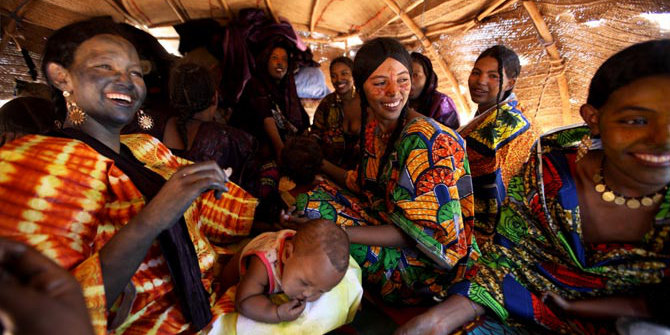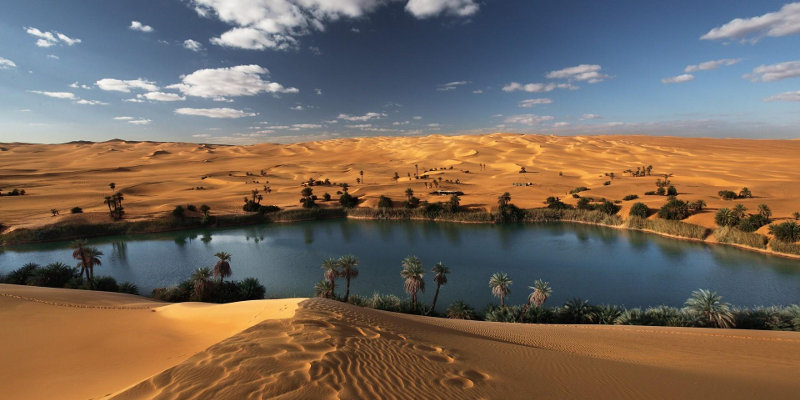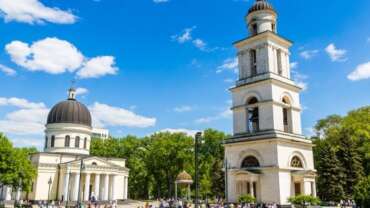Welcome to Niger!
Niger is an African landlocked country that is also known as the Heart of darkness. It is bordered by Mali, Burkina Faso, Libya, Algeria and Chad and has over 16 million people residing there. A former colony of the French colonialists, the country got her independence in the year 1960 and the official language that is spoken in Niger is French and as a tourist if you know French, your trip will be smoother.
The country is filled with untouched beauty that comes in form of the Desert that covers over 80% of the whole country filled with sand dunes and an extremely hot weather for a climate. 3/4s of the population in Niger are Muslims and that is why you will find many people in the streets dressed in Hijabs and head gears for the women whereas the men are more liberal with what they wear.
Niger has seen a lot of turmoil and is filled with a lot of crime and even though it is not all that safe to go visit the country at the moment, the wonders that are found in the country from the Mountains, the Desert and sand dunes, National Parks to the unique culture in the country and so many more other interesting things are some of the few things that will keep you entertained while in the country.
History of Niger
Early cultures
One of the central themes of the history of Niger is the interaction between the Tuareg (and also Tubu) nomads of the vast Saharan north and the sedentary agriculturalists of the south—that is, the interaction between opposed yet complementary ways of life and civilizations. Among the agriculturalists the main ethnic groups are the Songhai-Zarma in the west, the Hausa in the centre, and the Kanuri in the east. The Hausa have always been the most numerous. They constitute nearly half of the total population of Niger.
In the 14th century (possibly also earlier and later) the Tuareg-controlled kingdom of Takedda, west of the Aïr Massif, played a prominent role in long-distance trade, notably owing to the importance of its copper mines. Copper was then used as a currency throughout western Africa. Archaeological evidence attests to the existence of communities of agriculturalists, probably Songhai-speaking, in this region, which is now desert, at the time of the kingdom of Takedda. Takedda was succeeded at an unknown date by the sultanate of Agadez.
For many centuries the southeastern third of present-day Niger constituted one of the most important provinces of the Kanuri empire of Bornu. The might of Bornu was based on the control of a number of salt-producing sites and of long-distance trade, notably along the string of oases between Lake Chad and the Fezzan via Kawar.
The great drought of about 1735–56—the prelude to the present dry cycle, which set in about 1880—had an adverse effect upon the natural environment. This may explain why both the communities of agriculturalists west of Aïr and the oases between Lake Chad and Kawar disappeared. It may perhaps also explain in part why the Tuareg were able to extend their control over a fair portion of the sedentary south.
At the time of the colonial conquest, the disparate regions the French molded into an entity known as Niger may be best described as an assemblage of peripheral borderlands. As borderlands, however, these regions had played a significant role as zones of refuge—the west after 1591 and the Moroccan conquest of the Songhai empire and the Hausa region much later, after the 1804 Fulani jihad in central Hausaland (i.e., present-day northern Nigeria). In both cases the refugees were people who had lost in the military conflicts, as well as the religious struggles, of their respective homelands. Thus both regions became bastions of “traditionalism” in the face of partly alien conquerors attempting to impose Islam.
Colonial administration
The French conquest began in earnest only in 1899. It nearly met with disaster owing to the local population’s determined resistance against the notorious expedition in 1899 led by French Captains Paul Voulet and Charles-Paul-Louis Chanoine (also known as Julien Chanoine). It was only in 1922, after the severe drought and famine of 1913–15 and the Tuareg uprising of 1916–17, that the French felt safe enough to establish a regular administration under civilian control. By then the power of the Tuareg had been broken.
As elsewhere, the peace in French West Africa (pax gallica) meant, among other things, the rapid spread of Islam, a steep demographic increase, and, although exclusively among the Hausa, the extension of cash crop cultivation. The Songhai-Zarma, on the other hand, responded to the French tax demands by engaging themselves as seasonal labourers in the coastal regions.
Through the reforms of 1946, France’s African subjects were in theory granted full citizenship. Thus Niger, along with the other colonies (renamed “overseas territories”) in Black Africa, was represented in the French parliament. Consultative-legislative assemblies were also set up locally. These reforms secured the ascent of a tiny new elite, the so-called évolués—i.e., those who had been trained in French schools. Many were descendants of former slaves, and most were Songhai-Zarma. Indeed, the people of the west had proved to be far more open to European influence than, for instance, the Hausa.
At least until 1954–55 the French administration (headed for 12 years by Governor Jean Toby) remained firmly in control of the political situation. The first local executive was established in 1957. Its head, the left-wing trade unionist Djibo Bakary, advocated a no vote in the referendum of 1958, but 72 percent of the votes cast were in favour of a continued link with France. Nevertheless, under Bakary’s successor, his cousin and fellow Songhai-Zarma Hamani Diori, independence was proclaimed on August 3, 1960.
People of Niger
Linguistic groups
The largest linguistic group is formed by the Hausa, whose language, also spoken in Nigeria, is one of the most important in western Africa. A large percentage of the inhabitants of Niger understand Hausa, which possesses an abundant literature that has been printed in Latin characters in Nigeria. Songhai is the second most important language; it is also spoken in Mali, in northern Burkina Faso, and in northern Benin. In Niger itself it is divided into various dialects, such as Songhai proper, Zarma, and Dendi. The language of the Fulani is Fula; in Niger it has two dialects, eastern and western, the demarcation line between them running through the Boboye district. Tamashek is the language of the Tuareg, who often call themselves the Kel Tamagheq, or Tamashek speakers. The language is also spoken in Algeria and Mali and possesses its own writing, called tifinagh, which is in widespread use. Kanuri is spoken not only in Niger but also in Cameroon and Nigeria. While these five languages are the principal ones spoken in Niger, there is also an important Teda linguistic group in the Tibesti region. In addition, many of the peoples of Niger speak Arabic, and a still larger number read and write in that language; Agadez possesses one of the oldest Arabic schools in Africa. The use of the Arabic alphabet resulted in Fula and Hausa becoming written languages; the script is called ajami; a search for more old manuscripts in ajami is being conducted.
By using Hausa and Songhai, one may make oneself understood from one end of the country to the other. French, however, remains the official language, as well as the language of instruction, although it remains understood only by a small minority. English is taught as the principal foreign language in secondary schools.
Ethnic groups
Ethnic groups correspond to the five linguistic groups already mentioned. The Hausa are the largest group, constituting more than half of the present population, though the majority of the Hausa people live in Nigeria. The Hausa occupy the centre of southern Niger as far as Dogondoutchi. The Songhai-Zarma are found in the southwest; the Songhai proper live along the Niger, where they are assimilating the Kurtey and Wogo peoples. The majority of the Songhai people as a whole, however, live in Mali. The Zarma live on the left bank of the Niger, remaining in close contact with the Mauri and Arewa peoples. The Fulani, who are dispersed throughout the country, are mostly nomadic; they are also found dispersed throughout western Africa. The Tuareg, also nomadic, are divided into three subgroups—the Iullemmiden of the Azaouak region in the west, the Asben (Kel Aïr) in the Aïr region, and the Itesen (Kel Geres) to the south and east of Aïr. The Tuareg people are also found in Algeria and in Mali. The Kanuri, who live to the east of Zinder, are divided into a number of subgroups—the Manga, the Dogara (Dagara), the Mober, the Buduma, and the Kanembu; they are also found living in Chad, Cameroon, and Nigeria. Apart from the nomadic Teda of the Tibesti region, who constitute an important minority, the remainder of the population consists of Arabs, Black Africans from other countries, and Europeans, of whom the greater part are French.
Religious groups
Roughly 85 percent of the population adheres to the Sunni branch of Islam. Although the Annaawaa group of Hausa have always refused to accept Islam, as have a group of Fulani, the Wodaabe—who distinguish themselves from other Fulani for this reason—Islam remains the religion of the majority of both Hausa and Fulani. Christianity (Roman Catholicism and Protestantism) remains a religion of the towns, particularly of Niamey. There are several Christian missions in the Songhai and Arewa areas. Christianity is primarily a European religion, although it is also practiced by some Black Africans from other countries. The traditional animist religions of the Black Africans continue to manifest themselves in strength.
Cultural Life of Niger
Niger forms part of the vast Sahelian cultural region of western Africa. Although the influence of Islam is predominant, pre-Islamic cultural traditions are also strong and omnipresent. Since independence, greater interest has been shown in the country’s cultural heritage, particularly with respect to traditional architecture, handicrafts, dances, and music. With the assistance of the United Nations Educational, Scientific and Cultural Organization, a regional centre for the collection of oral traditions has been established at Niamey. An institution prominent in cultural life is the National Museum at Niamey.
Niamey - The Capital

Niamey is known for its oasis towns, desert dunes, and Africa’s greatest dinosaur graveyard, Niger has layers and layers of history. In the capital, Niamey, ornate mosques, the vast Niger River, and museums that celebrate the country’s cultural heritage are the perfect introduction to the wonderfully diverse nation.
The largest and most beautiful mosque in the city, Niamey’s Grand Mosque was built in the 1970s and has since become the city’s gathering place for Friday prayers. Take a tour up the minaret’s 171 steps and look out from your place in the heart of the city. It’s one of the top places to tick off your Niamey itinerary.






